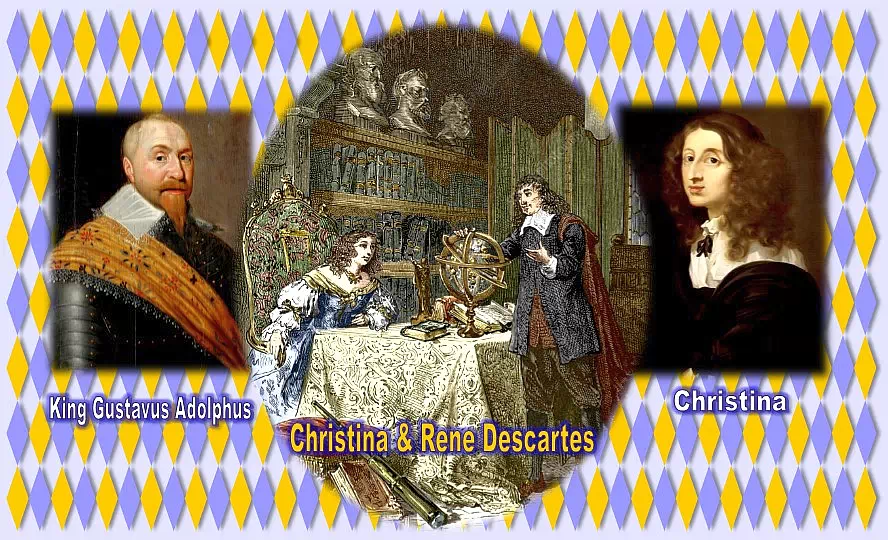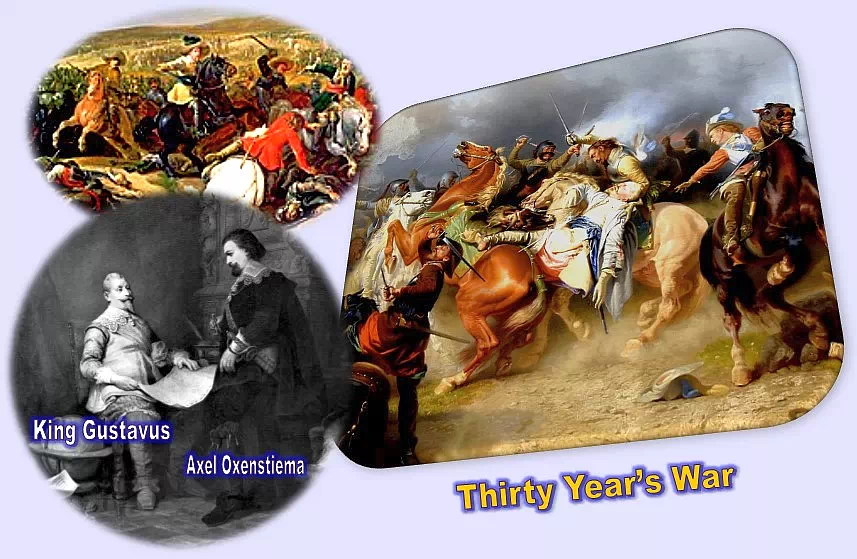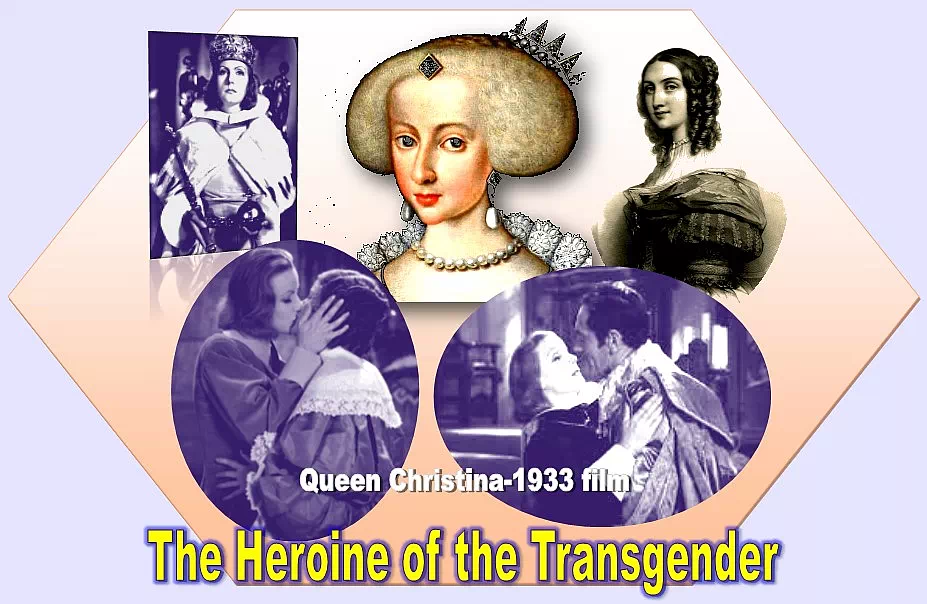She was brought up in unfeminine ways from her childhood.
She was made to behave and dress like a boy.
She was none other than Queen/King Christina, the daughter of Gustavus Adolphus, king of Sweden.
She was born in 1626 in Tre Kronor Castle, Stockholm, Sweden and died at the age of 62 in 1689, buried in Rome.

As she was the only surviving child, king Gustavus ordered to crown her with king’s title. So she was brought up as the future king of Sweden. She used to dress like male and never thought to share her power with a consort. Her versatile character and extravagant life style made her familiar among her contemporaries. Her name was as popular as a lesbian.
She is still treated as a ‘Heroine of the Transgender’. She is more likely said that she was a non-practicing heterosexual.
In 1933, MGM produced a Hollywood movie about Queen Christina with Greta Garbo as the heroine.
She was a great learner from her childhood. She had great memory power. She was interested to learn from the great French philosopher, mathematician, and man of science – Rene Descartes.
Rene Descartes (1596-1650):
In mathematics he introduced and developed the use of coordinates to locate a point in two or three dimensions.

As a philosopher, Rene Descartes developed dualistic theory of mind and matter as separate though interacting. For this, he aimed to reach secure foundations for knowledge. According to his theory, everything was open to doubt except his own conscious experience and existence as a necessary condition. He always used to iterate “I think, therefore I am” (Cogito, ergo sum).
This theory had a great influence on Queen/King Christina. She developed self-identity with less care about her royal life. This might have influenced her to get attracted to Catholic principles though she was protestant by birth.
King Gustavus Adolphus & Sweden:
Christina’s father, King Gustavus, made Sweden a powerful European kingdom.
Under the rule of King Gustavus Adolphus (1594-1632) Sweden became a European power in the beginning decades of 17th century. He won many battles repeatedly against Denmark, Poland, and Russia in the first part of his reign. He made Sweden a strong and modern state with his domestic reforms. He became Protestant and intervened on the Protestant side in the ‘Thirty Years’ War’ in 1630.

What is Thirty Year’s War?
Thirty Years’ War in Europe was a series of conflicts from 1618 to 1648 between Protestants and Catholics. The war started in Germany and spread until France, Denmark, and Sweden were opposing the Holy Roman Empire and Spain. It developed into a struggle for continental hegemony. It was ended by the peace accord – the ‘Treaty of Westphalia’ in 1648.
In this war he defeated the Holy Roman Empire under Wallenstein, Austrian general, who fought for the Hapsburgs.
Hapsburgs (Habsburgs):

Hapsburgs are one of the principal dynasties of central Europe from medieval to modern times. Basically they were a royal German family that provided rulers for several European states and wore the crown of the Holy Roman Empire from 1440 to 1806.
In 1632, King Gustavus Adolphus was killed in the battle of Lutzen (1594-1632).
Christina as King of Sweden:
Christina became King of Sweden as per her father’s orders after his death in the battle.
Gustavus’s wise chancellor, Axel Oxenstiema, made all arrangements for her crowning ceremony.
After 1651, her attention on state affairs lessened as her religious thoughts inclined towards Catholicism. This lead to uncertainty towards her position as a ruler of a protestant state. She finally decided to abdicate her throne in pursuit of her new religion.
She left Sweden and took a name as pseudonym as Count Dohna for her safety from her enemies. She received warm welcome from Pope Alexander VII when reached Rome.
Her conversion to Catholic faith was done on 24 December 1654. Her baptized name was Kistina Augusta and adopted name, Christina Alexandra.

Her extravagant life style made her bankrupt. She moved to France. She spent unsettled and restless life there.
She finally took a decision to go home in Sweden. While going home, in the middle of the journey she died in Hamburg in 1689. Her burial took place in St. Peter’s Basilica in the Vatican. She and three women have only granted this honor so far.
She was fond of reading books. She maintained a huge personal library with more than 6000 books.
She was a good writer and began to write her autobiography which was unfinished. In this book she mentioned about Alexander the Great, Cyrus the Great, and Julius Caesar as her heroes. She loved art and music.
Was Christina really a Transgender as thought of by many historians?
Still today her question of sexuality is debated. She had a close relationship with cardinal Azzolino which arose some controversy while she was living in Rome.
On the contrary, some historians describe her as a lesbian. As it seems from her letters that she also had some passionate relationships with some close female acquaintances. She was also described to have maintained heterosexual, non-sexual, lesbian, or bisexual relationships. She used to engage in many activities without serious intentions.

Christina herself in her autobiography mentioned that she is flirting with her bisexual personality. But, she also added a few words about her in that book that she was neither ‘Male nor ‘Hermaphrodite’ as she was labelled by some.

